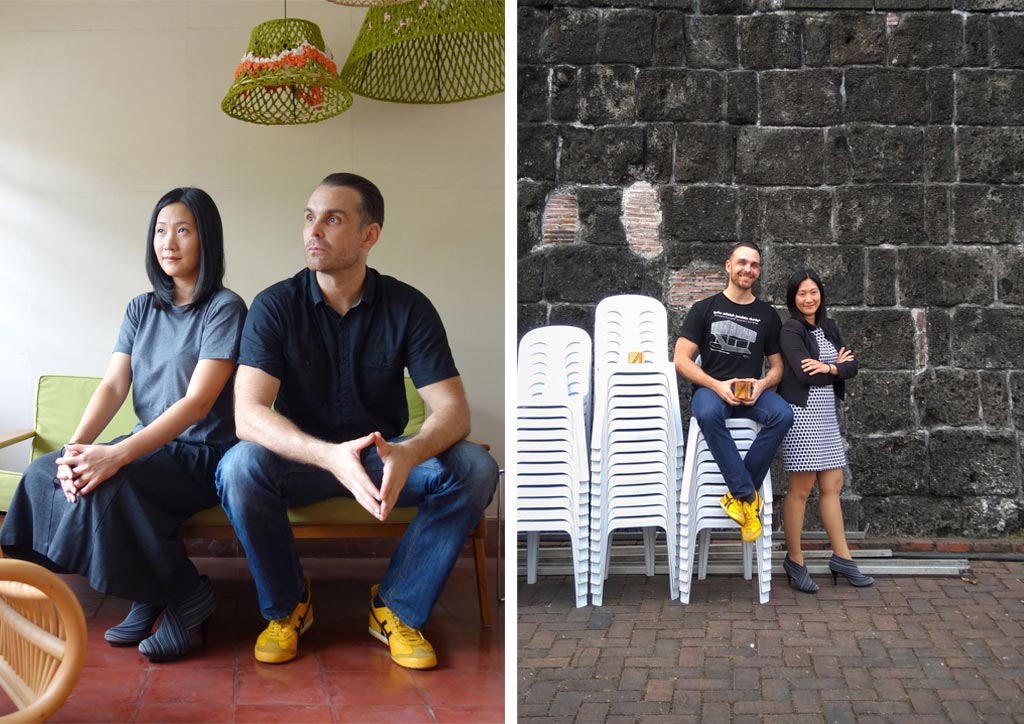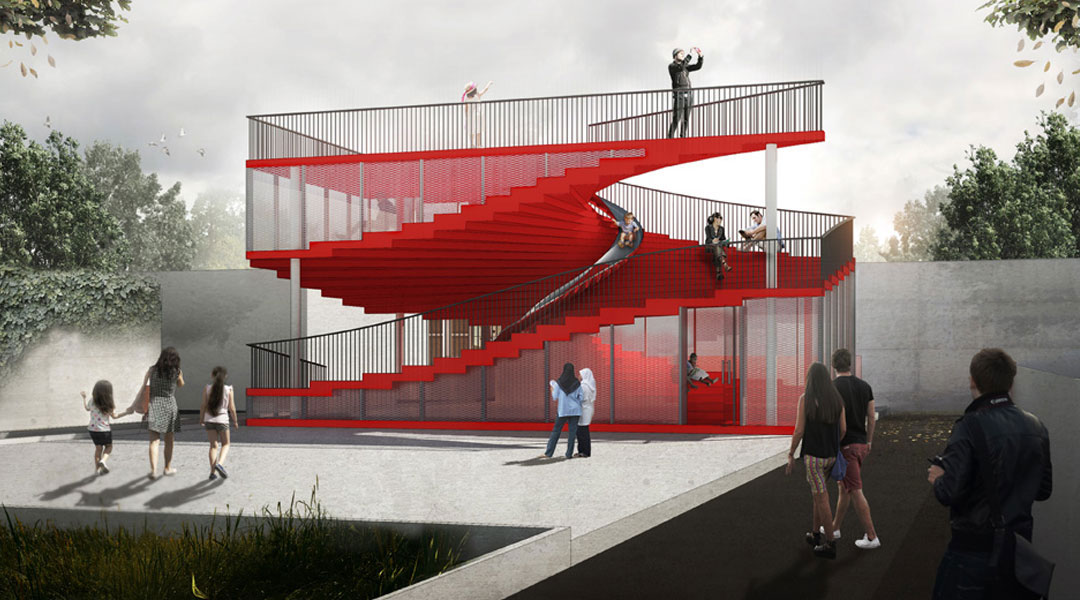
Indonesian studio SHAU takes on big problems with smart small-scale solutions
Bandung-based SHAU Indonesia is a studio on a mission to design attractive and socially responsible architecture. They flout the status quo, rebel against archetypes, and even create new typologies to achieve their goals. This is best illustrated with the project they spearheaded with government and private funding: the Microlibrary project.
SHAU describes it as a cross between the city library and a mobile library. With context-dictated designs and various site conditions, the microlibraries are meant to activate leftover urban spaces so that these enrich their surrounding communities. Moreover, these libraries make use of unorthodox building materials like recycled ice cream buckets in Microlibrary Bima and PVC pipes in Microlibrary Lansia, which are low-cost and facilitate passive cooling.
“The idea is to replicate the concept, not the design into not just the various parts of Indonesia, but the world,” Daliana Suryawinata, SHAU director and founding partner, said after presenting the initial four designs of microlibraries. “Big changes often have small beginnings,” she told her audience during SHAU’s talk in Anthology Architecture Festival 2018, held in Fort Santiago, Intramuros, Manila.
BluPrint sits down with the duo behind SHAU to talk about the microlibraries, the value of experimentation, and firm expansion.

BluPrint: Are there any other typologies that you think can be translated into a micro scale?
Daliana Suryawinata (DS): That’s an interesting question. Though we actually did not focus on the ‘micro’ itself as we saw this scale as being the natural response to the limitations posed by the leftover sites that we worked on. Architectural solutions abound in various scales and sizes; we didn’t want to limit ourselves to the micro-scale.
I recall back in 2009, we worked with andramatin to develop a concept called the Social Mall. In 2006, Indonesia was building a hundred shopping malls—way more than necessary. And there’s a glut of vacant malls which aren’t fully developed, creating spaces with a lack of social value. Our group thought of a shopping mall that could host public facilities like parks, clinics and libraries, clustered together with the usual retail spaces as an interesting typological solution.
Florian Heinzelmann (FH): Our studio gained popularity for working in the micro scale, as Daliana said, but that doesn’t necessarily mean we want to specialize or concentrate only on the micro-stuff. But what is nice with the microlibrary is its speedy implementation. A regular project might take up to a decade to build and design whereas small-scale projects have faster time trajectories and a more immediate impact.
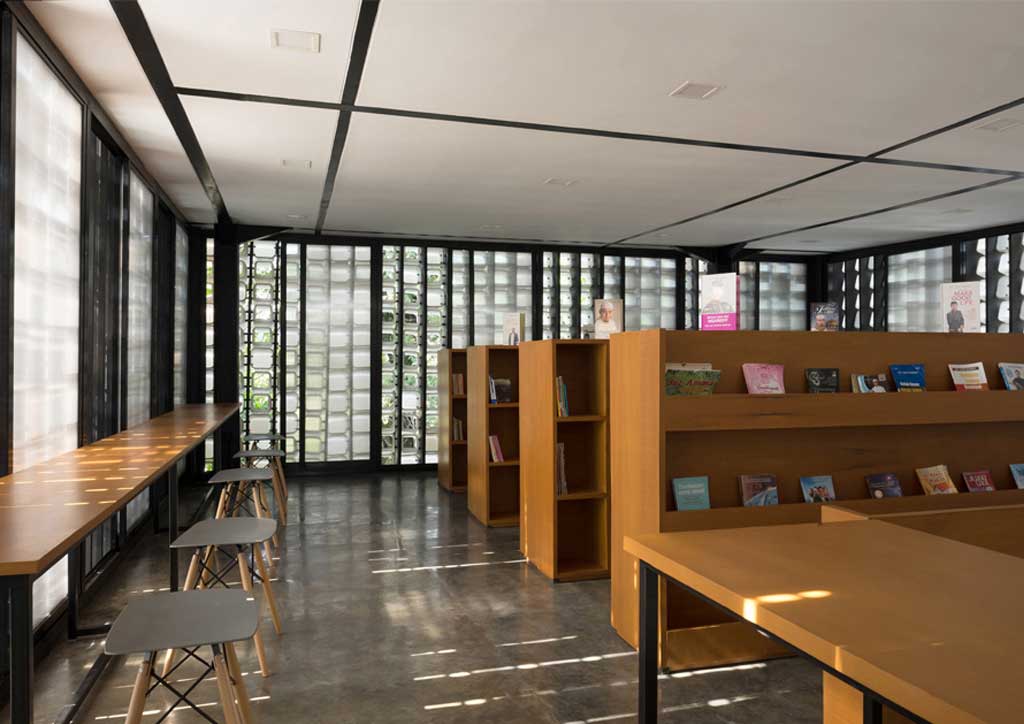
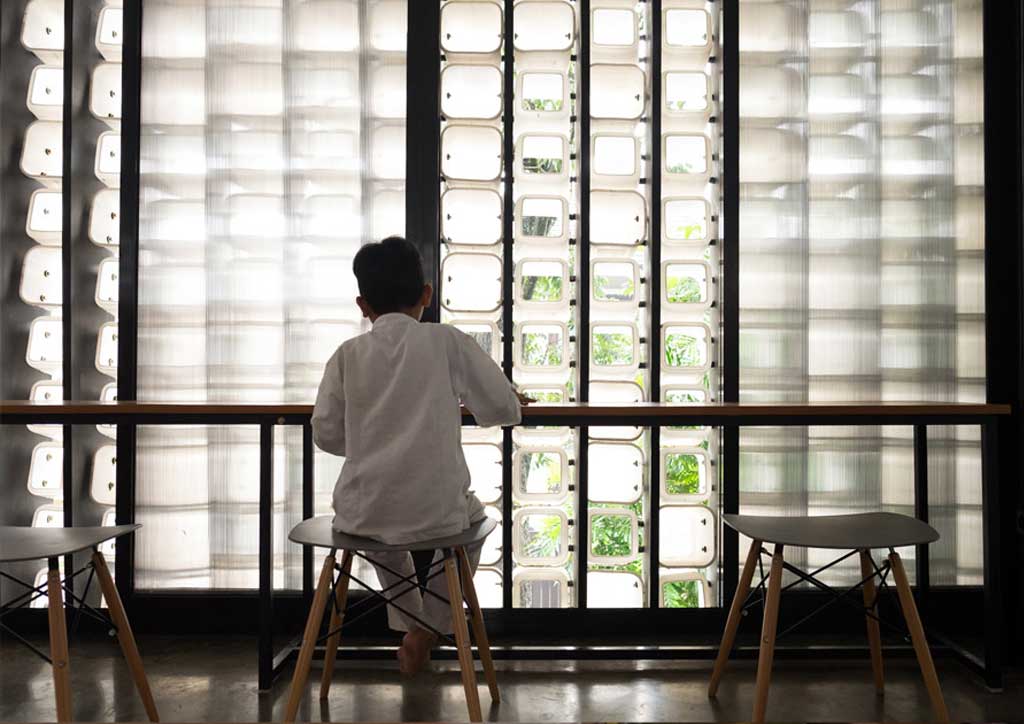
What about the protection of the books in the microlibraries, particularly the open-air ones? Indonesia, being a tropical country, is prone to really hot summers and wet monsoons. How do the designs of the microlibraries protect and preserve these books?
FH: That is why our designs help facilitate the development of microclimates and employ cross ventilation. We are aware that the Indonesian environment is not the most book-friendly. The books in the library are partly used, worn down, and so these are not historical books which need to be strictly maintained and preserved.
Our microlibraries do not rely heavily on technology in their day-to-day functions to save costs; we don’t have air-conditioning so we cannot de-humidify. What we can do is situate it in a shaded place and have cross ventilation so at least the moisture gets dragged out. At the end of the day, it’s just like having your books at home.
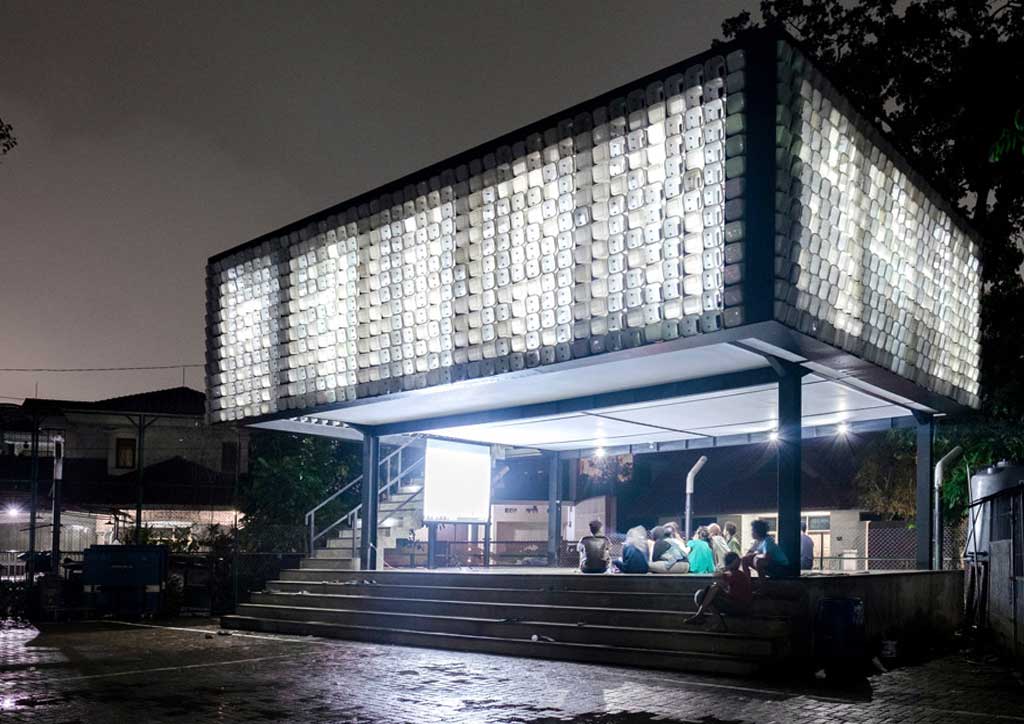
What are your favorite materials to work with?
DS: We love to use non-conventional materials like ice cream buckets, something new that has never been explored before. When there is time and or budget, we like to experiment on the materiality of our architecture projects.
The microlibraries show a lot of daring for a small-scale project. Can we talk about how this impacts budget and a project’s realization?
FH: We remember our time as students at the Berlage Institute in Rotterdam and all the big guys showed up, showing their project presentations, and everything was fantastic. What I never enjoyed though is an underlying sense of dishonesty that permeated such presentations. So there they are and they have this concept of how the building is done. But there is often no talk about difficulties, budget constraints, etc. What we would like to show to students is that not everything is easy to do especially in architecture. There are difficulties to overcome and you have to work really hard. For us, we openly say that we have problems that need solving.
Difficulties and problems often lead to a bit of experimentation.
DS: Experimentation also requires budget. To be honest, the microlibary is a scale we created so that we could play as architects, because micro-scaled projects are less risky. Although when time came for us to implement them, we discovered how even small projects are difficult to execute, but we did it anyway. In the case of the Helicoid library, we immediately tried to figure out how to implement it to keep its form, so we talked with the OSB provider as well as the manufacturer who will put this thing together. The sponsor was strict that the budget was to be just that amount. We will need to revise the design this time to fit the budget so it can be implemented, but we will definitely build this helicoid library design somewhere else.
FH: Also, you experiment to find something out. And failure in certain aspects is an intrinsic part of an experiment. You design to experiment with materiality, with manufacturing possibilities, and how you put this thing together. And you start and you don’t exactly know where the journey goes. In this case it also eats the budget. But when you do something experimental you never know how it will end up and you often need to readjust things throughout your journey until the solution comes into the picture.
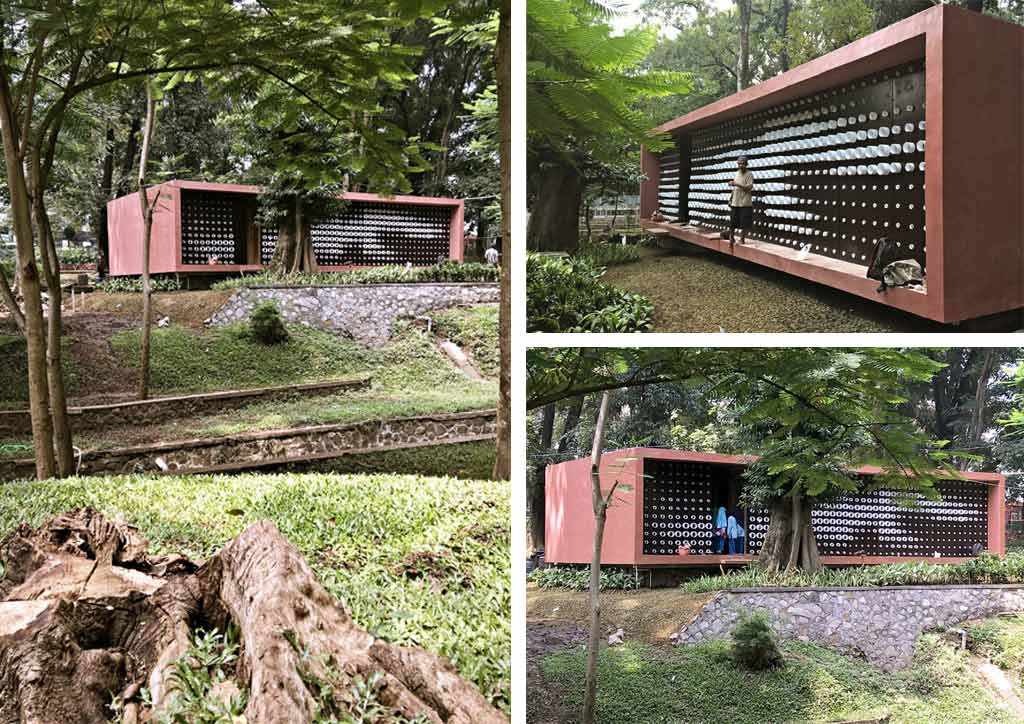
Though failure is often viewed in a negative light.
FH: Failure is important because while it tells you that something went wrong, it alerts you to approach it a different way. There is learning to be had. Reevaluate what you did and adopt a new strategy. Having not done the experiment however, you wouldn’t have learned anything.
Moving on, what other exciting opportunities can working with small-scale projects offer?
DS: Usually small-scale projects get a lot more freedom than large scale ones. And because of the small size, it has a controllable budget. The risk, as I mentioned before, is also smaller as compared to work on a larger scale development. Slightly easier to push further, I would say, for realization, do you agree?
FH: Yes I do. We usually deal with two types of projects, the more commercial projects, and the experimental ones like the microlibraries. We always try hard to push the boundaries when we design in all of our projects. However, you can be much more experimental when it comes to small-scale projects, you can learn something, and if it does work, you might be able to re-implement it in a larger scale.
You need endurance in architecture. Smaller scale projects introduce a different pace in design and implementation within the office. What is a very good advantage, talking about the pace, is when you nab a big project coupled with sizeable manpower; you’re working in the project for years and the team will feel at certain moments stale and static. So you drop them into a small-scale project and it becomes exciting again; it’s like recreational work in a way. The team can freshen up and shake things loose instead of sitting behind screens for hours, drawing the same CAD lines, and optimizing toilets etc. (Laughs). And it becomes more rewarding for them should the work get implemented.
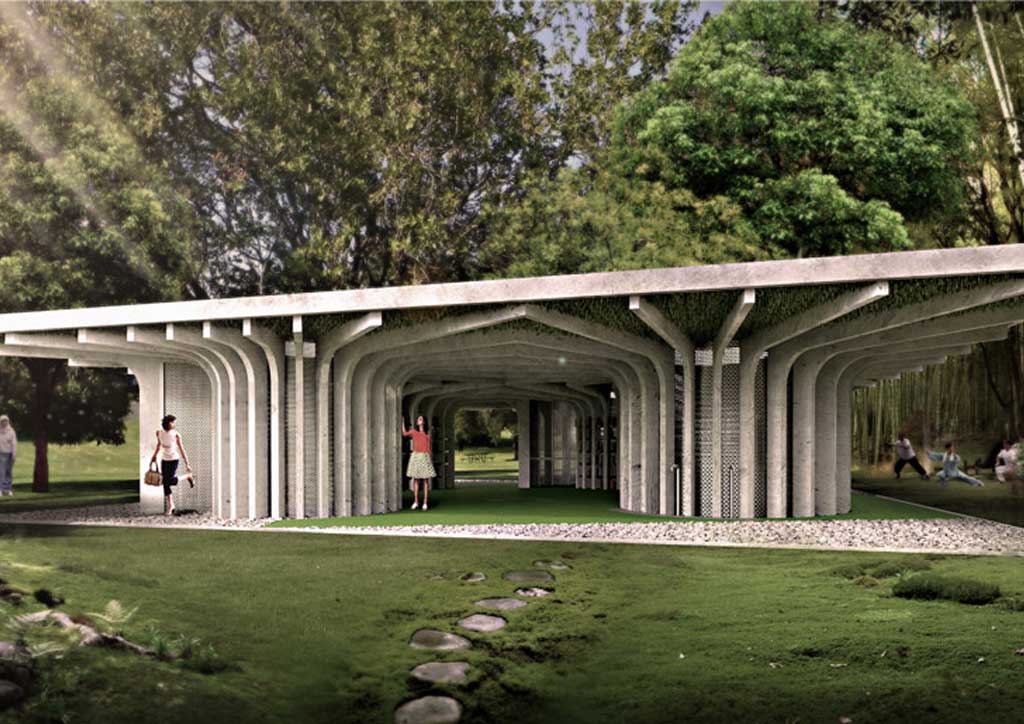

[irp posts=”6682″ name=”Department of Architecture’s Twitee Vajrabhaya talks heritage”]
Still on the topic of scale, how do you see your firm, five-ten years from now in terms of size and reach? Are there plans to grow in size?
DS: Yes, and we are open to partnerships. We are open to like-minded people, for projects and ownership of the company. We now have SHAU Rotterdam, Munich and Bandung. And in time, we envision each studio having around 40 people, but then with many branches all over the world. That’s how we see it more than having one centralized place with 300 people.
FH: Yep, I’d definitely like to have more people. In Germany where I come from, if you haven’t done a certain typology and helmed this project successfully, it is very difficult to get taken seriously. And then when I came to Indonesia we got taken seriously quite fast and I like that. Because some of these larger scale projects are also very interesting and we’d like to do those. And of course, to do more of them, you do need to develop the manpower behind it. I’m totally not opposed to growing the company in terms of amount of people.
I can also see strength in numbers—having visited Foster in London and worked at UNStudio. If you have a critical mass, then you can start continuing this experimentation on a different level. You can dedicate smaller teams to experiment on this direction, that direction like OMA’s AMO, coming up and dealing with theoretical parts or issues that they can solve architecturally. Foster has the Specialist Modelling Group. UNStudio has different knowledge platforms such as Sustainability and Parameters etc. So all of a sudden, you can allocate people to do research, and they don’t necessarily have to be immediately productive; we can come back and say okay, we’d like to try use the product of such research in so and so project. This is a very fascinating model and enables one to start cross-financing experiments and at the same time open the firm to bigger projects. ![]()
